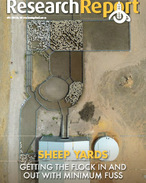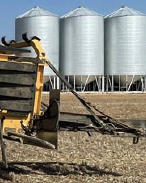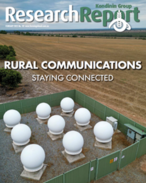This article is 7 years old. Images might not display.
The investment into crop productivity and weed science facilities comes from a $2.7m Grains Research and Development Corporation (GRDC) grant and a co-contribution of $300,000 from CSU.
"This state-of-the-art facility in Wagga is expected to improve the efficiency and productivity of crop research and weed science in southern NSW, helping to fast-track new research outcomes to growers' paddocks,” GRDC Managing Director Dr Steve Jefferies said.
The GRDC Grains Research and Development (R&D) Infrastructure Grant is part of a $15 million investment by the GRDC Board to build national research capacity.
Dr Jefferies said the purpose of the GRDC grant program was to boost capacity and capability in Australian grain R&D through funding key infrastructure, and to create enduring profitability for grain growers.
"If our research partners are going to help us deliver to growers, it is critical they have the right infrastructure," he said.
"This program is the first time GRDC has invested in infrastructure, not just in southern NSW but nationally, to support our research partners in creating critical capacity and capability.
CSU Deputy Vice-Chancellor (Research, Development and Industry) Professor Mary Kelly, said the GRDC infrastructure investment would allow the University to lead a more responsive and effective R&D environment in collaboration with other key stakeholders in the grain industry.
"CSU serves as an important regional research centre of applied research development and extension (RD&E) that supports farming systems, resulting in improved practices and adoption of national grains research outcomes," Professor Kelly said.
"This infrastructure investment in glasshouses and plant growth chambers will ensure we have the capacity to perform controlled environmental research with crops and weeds, which will complement and support the expansion of existing research programs.
"It will also be invaluable in supporting joint projects with our farming systems research partners, leading to stronger outcomes in aligned paddock research experiments."
Professor Kelly said the GRDC investment into infrastructure would also be highly complementary to developing the multi-million dollar strategic capital investment by Charles Sturt University into the AgriSciences Research and Business Park.
The life span of the glasshouses is approximately 40 years and that of plant growth chambers 20 years and will be managed and maintained by CSU.






















